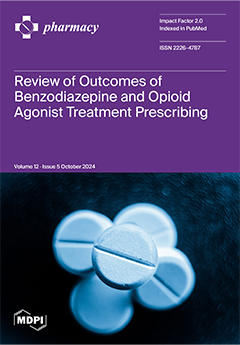Background: Anticoagulants are life-saving medicines that can prevent strokes for patients diagnosed with atrial fibrillation (AF) as well as treating patients with venous thromboembolism (VTE), but when used incorrectly, they are frequently associated with patient harm. Aim: To evaluate the impact of community pharmacy teams on optimising patient knowledge and awareness and improving medication safety from the use of anticoagulants. Methods: Two national audits, consisting of 17 questions assessing and improving patients’ understanding of anticoagulant therapy, identifying high-risk patients, and contacting prescribers when clinically appropriate were incentivised for England’s community pharmacies in 2021–2022 and 2023–2024 using the Pharmacy Quality Scheme (PQS) commissioned by NHS England. Results: Approximately 11,000 community pharmacies audited just under a quarter of a million patients in total, whilst making almost 150,000 interventions for patients taking oral anticoagulants, i.e., identifying and addressing medication issues which could increase the risk of bleeding/harm. Out of the 111,195 patients audited in 2021–2022, only 24,545 (23%) patients were prescribed vitamin K antagonists. The remaining patients were prescribed direct oral anticoagulants (DOACs). By 2023–2024, this decreased to 17,043 (16%) patients. Most patients knew that they were prescribed an anticoagulant (95.6%, 106,255 in 2021–2022 and 96.5%, 101,006 in 2023–2024,
p < 0.001). Discussion: The audits resulted in a statistically significant increase in patients with a standard yellow anticoagulant alert card, as identified in audit 2 (73,901 66.5% in 2021–2022 to 76,735, 73.3% in 2023–2024,
p < 0.001). Furthermore, fewer patients were prescribed concurrent antiplatelets with an anticoagulant (6021; 4.6% in 2021–2022 to 4975; 4% in 2023–2024,
p < 0.001). Although there was an increase in the number of patients prescribed NSAIDs with anticoagulants, more of these patients were also prescribed gastroprotection concurrently (927 77.2% in 2021–2022 to 1457 84.1% in 2023–2024,
p < 0.05). The majority of patients on warfarin had their blood checked within 12 weeks. Further there was an increase for these patients in the percentage of people prescribed VKAs who knew dietary changes can affect their anticoagulant medicine (16,764 67.4% in 2021–2022 to 12,594 73.9% in 2023–2024
p < 0.001). Conclusions: Community pharmacy teams are well placed in educating and counselling patients on the safe use of anticoagulants and ensuring that all patients are correctly monitored.
Full article





